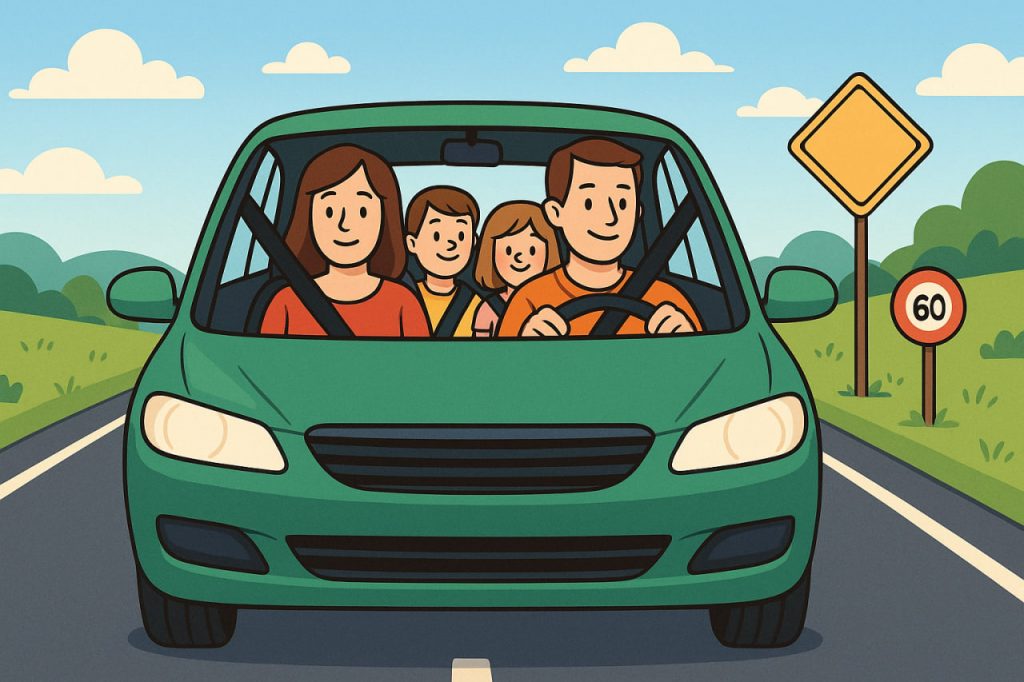Traveling by car offers freedom, flexibility, and comfort — but it also carries risks that require careful preparation. Whether it’s a short drive through the city or a long journey across the country, road safety depends on awareness, responsibility, and smart habits. Understanding the key principles of safe driving helps protect not only you and your passengers but also everyone sharing the road.
Pre-Trip Preparation
Every safe journey begins with proper preparation. Before setting off, always check the vehicle’s basic systems:
- Brakes — ensure they respond quickly and evenly.
- Tires — verify pressure and tread depth; underinflated tires increase the risk of accidents.
- Lights and signals — functioning headlights, brake lights, and turn signals improve visibility.
- Fluids — check oil, coolant, and windshield washer levels.
A quick inspection can prevent serious problems on the road. For long-distance trips, carrying a first-aid kit, fire extinguisher, and reflective vest is not optional — it’s essential.
Seatbelts and Child Safety
Seatbelts are the single most effective protection against injury in an accident. They reduce the risk of death by up to 45% for front-seat passengers. Children must always travel in age-appropriate car seats or boosters, securely fastened in the back seat. Never hold a child in your arms while driving — even a low-speed collision can be fatal without proper restraints.
The Role of Attention and Focus
Distracted driving is one of the leading causes of accidents worldwide. Using a smartphone, eating, or adjusting controls while driving can reduce reaction time to dangerous levels. Always keep both hands on the wheel and eyes on the road. Fatigue is another silent threat — driving while tired slows reflexes almost as much as alcohol. Take regular breaks every 2–3 hours and never push beyond your physical limits.
Weather and Road Conditions
Adapting to road and weather conditions is a critical aspect of safe driving. In rain, snow, or fog, visibility decreases dramatically, so it’s important to:
- Reduce speed and increase following distance.
- Use low-beam headlights instead of high beams in fog.
- Avoid sudden braking or sharp turns that may cause skidding.
In winter, keep a set of snow chains, blankets, and warm clothing in your car — just in case of emergencies.
The Importance of Speed Control
Excessive speed remains the number one cause of fatal crashes. Even small increases in speed significantly reduce your ability to react and control the vehicle. Always follow posted speed limits and adjust for conditions — remember, speed limits are maximums, not targets. On long trips, cruise control can help maintain a consistent, safe speed and reduce fatigue.
Defensive Driving
Defensive driving means anticipating the actions of others and staying alert for potential hazards. Keep a safe distance from other cars, never assume that other drivers will follow the rules, and always check mirrors before changing lanes. Avoid aggressive behavior — patience and calmness are essential for safety.
Emergency Situations
If your car breaks down or an accident occurs, move to a safe area, turn on hazard lights, and place a warning triangle behind the vehicle. Stay inside with your seatbelt fastened if the car is on a busy highway. Call emergency services immediately and provide clear information about your location.
Interesting Facts
- Wearing a seatbelt reduces the chance of fatal injury by nearly 50%.
- Airbags are designed to work with seatbelts, not as replacements.
- Driving at 80 km/h instead of 100 km/h can cut fuel use and emissions by 15%.
- Most accidents happen within 5 km of home, when drivers are most relaxed.
Glossary
- Defensive driving — a cautious driving style that anticipates mistakes by other drivers.
- Tread depth — the thickness of tire grooves that ensures proper grip on the road.
- Hydroplaning — loss of traction on wet surfaces when tires slide over water.
- Cruise control — an automatic system that maintains constant vehicle speed.
- Visibility — the distance a driver can clearly see ahead under current conditions.


